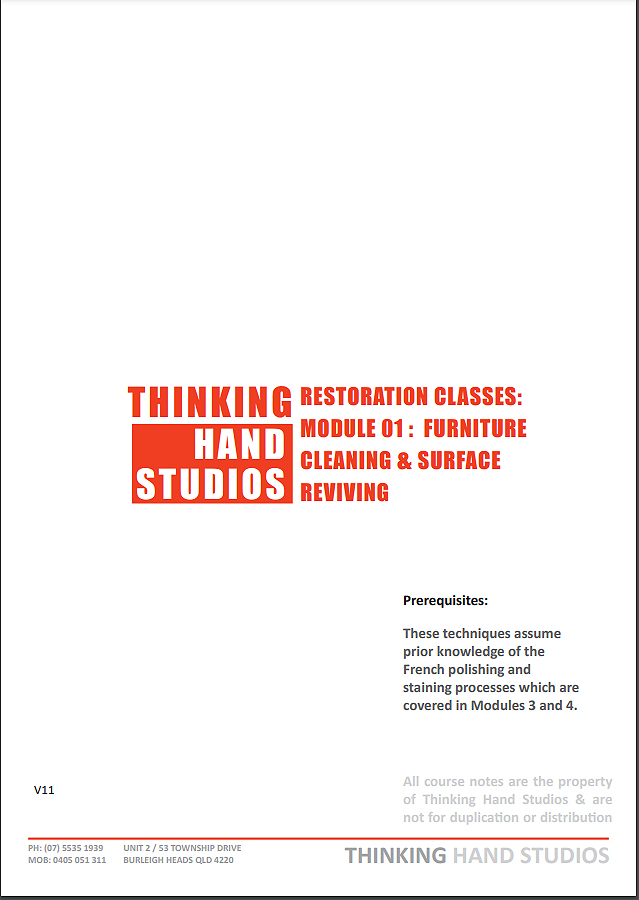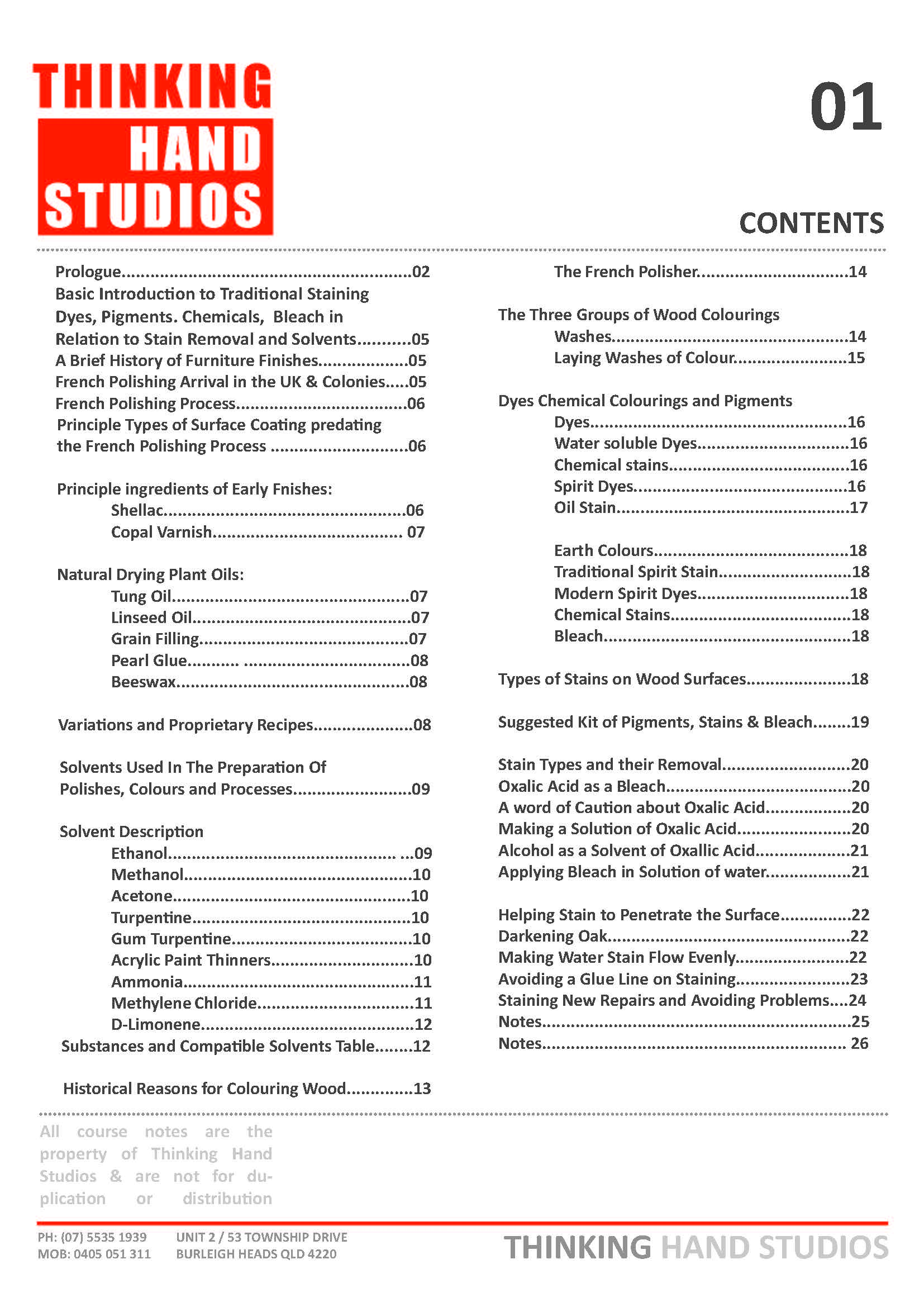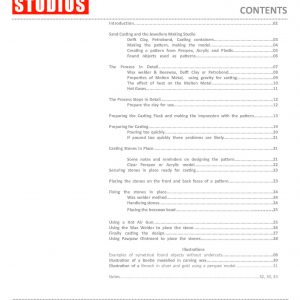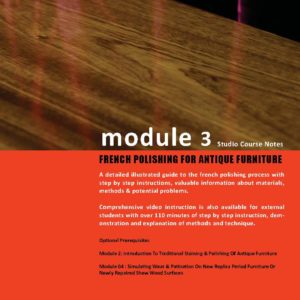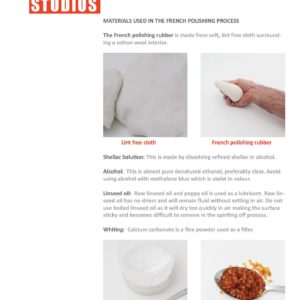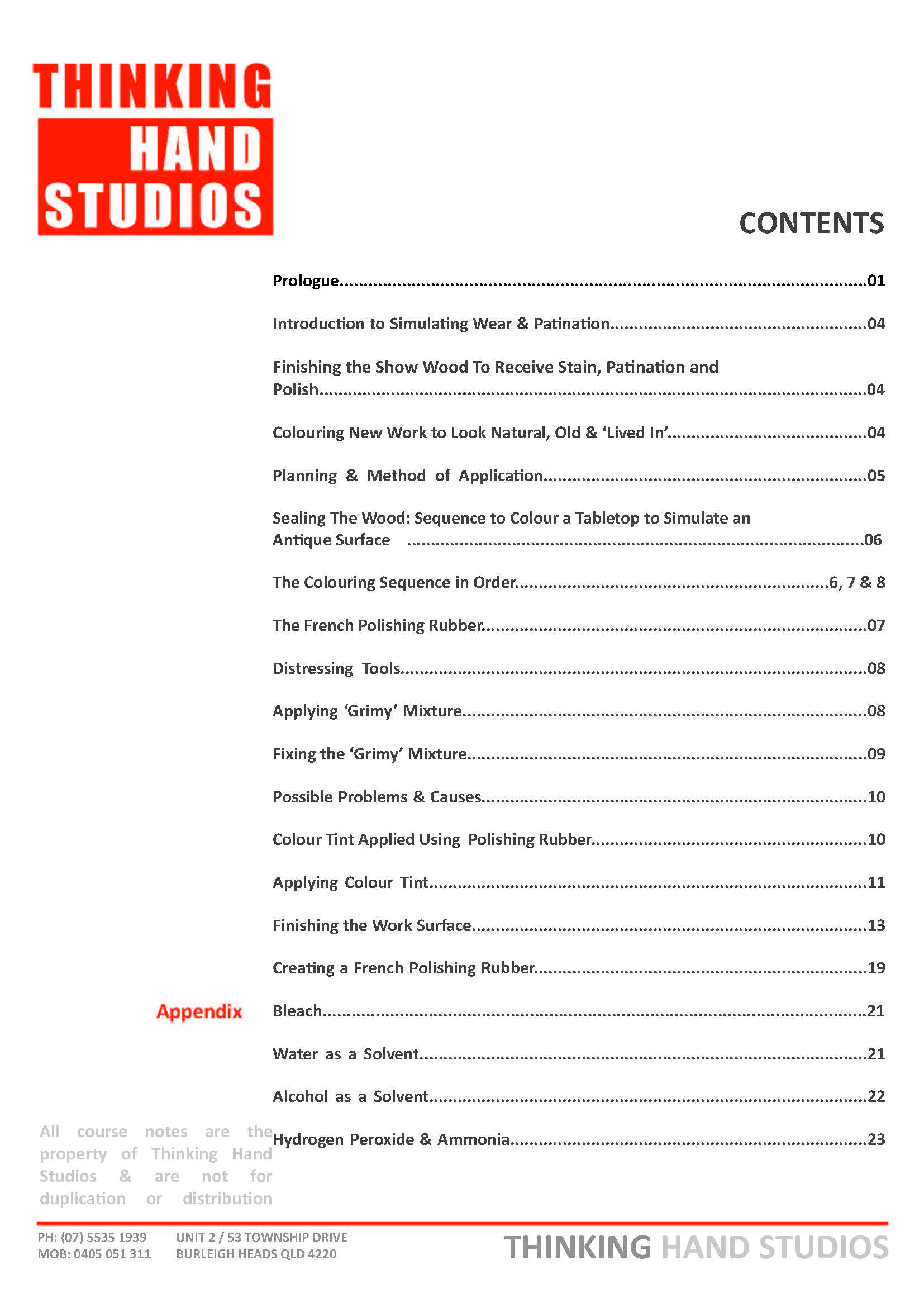Module 2 | Traditional Staining Techniques for Furniture & Antique Restoration
$10.00
This eBook is written and presented by Calvert Regan who has had more than 40 years professional experience as a traditional craftsman.
28 Pages of reference material primarily designed as a stand alone step by step guide for those wishing to explore and experience this process.
Module 02
Basic Introduction to Traditional Staining Dyes, Pigments. Chemicals, Bleach in relation to Stain removal and Solvents.
This module introduces the principal materials and processes used in staining and polishing the surfaces of wood. Various methods of finishing
furniture have been used in the past, all with particular qualities and aesthetic appeal, as well as the period in which the furniture is made.
It is important to preserve original finishes if at all possible, because not only do we have a duty of care, but inconsiderate treatment will
adversely affect the value of the furniture. This module covers methods from 1850-1920 which is the period
including French Polishing. Pre-1850 materials used in finishing are also discussed. In order to begin work on repairing finishes it is necessary to
be able to identify the type of finish.
This can be downloaded via the links provided when checking out (1.8mB).
Description
This eBook is written and presented by Calvert Regan who has had more than 40 years professional experience as a traditional craftsman.
28 Pages of reference material primarily designed as a stand alone step by step guide for those wishing to explore and experience this process.
Module 02
Basic Introduction to Traditional Staining Dyes, Pigments. Chemicals, Bleach in relation to Stain removal and Solvents.
This module introduces the principal materials and processes used in staining and polishing the surfaces of wood. Various methods of finishing
furniture have been used in the past, all with particular qualities and aesthetic appeal, as well as the period in which the furniture is made.
It is important to preserve original finishes if at all possible, because not only do we have a duty of care, but inconsiderate treatment will
adversely affect the value of the furniture. This module covers methods from 1850-1920 which is the period
including French Polishing. Pre-1850 materials used in finishing are also discussed. In order to begin work on repairing finishes it is necessary to
be able to identify the type of finish.

